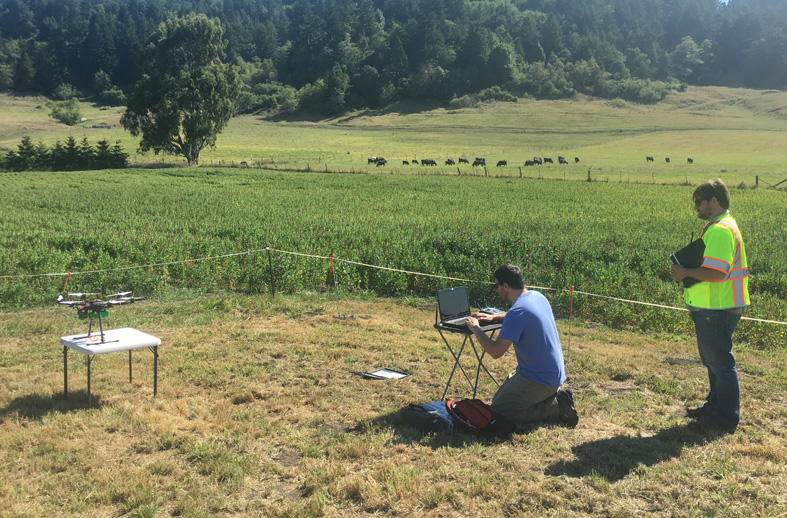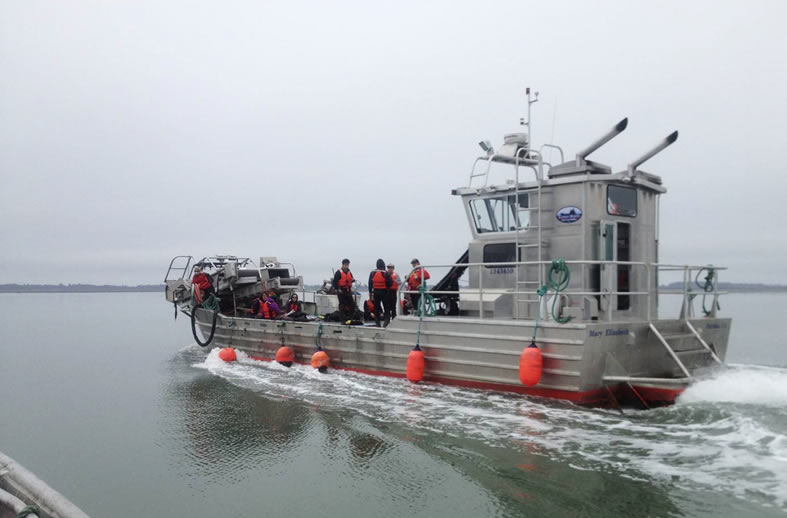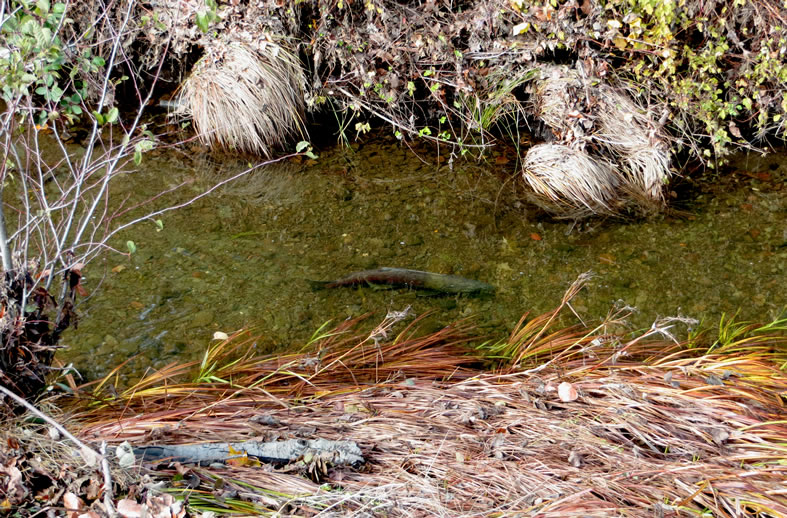Biological Sciences
SHN biologists and botanists assess how a project may affect a species or its habitat in both space and time, by evaluating the intersection of project phases and species life history. Proactive biological studies conducted during the planning stages can reduce or eliminate impacts on listed species, resulting in significant savings in time and money because permitting is faster and the risks of construction delays are minimized.
Sometimes, project impacts are unavoidable and mitigation and monitoring are required. SHN biologists have the expertise and field experience to develop mitigation plans and minimize project impacts to the affected species. We design and write sampling and mitigation monitoring plans that definitively characterize impacts and mitigation success under each project’s unique conditions. SHN biologists have excellent reputations and working relationships with state and federal regulatory agency personnel, which adds value to our biologists’ scientific services.
Evaluating vegetation health through drone imagery

Project Details
Location: Humboldt County, California
Owner/Client: Lundberg Family Farms
Partners: None
Project Timeline: 2016
Project Details
Location: Humboldt County, California
Owner/Client: Lundberg Family Farms
Partners: None
Project Timeline: 2016
Project Details
Location: Humboldt County, California
Owner/Client: Lundberg Family Farms
Partners: None
Project Timeline: 2016
Project Details
Location: Humboldt County, California
Owner/Client: Lundberg Family Farms
Partners: None
Project Timeline: 2016
Project Details
Location: Humboldt County, California
Owner/Client: Lundberg Family Farms
Partners: None
Project Timeline: 2016
SHN’s unmanned aerial vehicle (UAV or drone) pilots and geographic information system (GIS) specialists assisted a quinoa farmer in evaluating the health of his crops. Farming quinoa is new in Humboldt County and there is a lot to learn about growing a healthy yield in our unique climate. Crop health and yield are affected by numerous factors including soil fertility, moisture availability, and drainage. SHN used a multi-spectral camera mounted on a drone to map crop health conditions in the fields.
Using the images, the farmer identified portions of the fields where crops are stressed, allowing him to address the situation by, for example, watering more, adding mulch, or conditioning the soil in those areas. Mapping with drones is a cost effective way to document crop health; this documentation allows year to year comparison of crop yields when fertilizer or water adjustments are made.
Quantifying the potential effects of aquaculture on eelgrass

Project Details
Location: Humboldt Bay, California
Owner/Client: Plauche & Carr, LLP
Partners: Coast Seafoods Company
Project Timeline: 2015 and on-going
Project Details
Location: Humboldt Bay, California
Owner/Client: Plauche & Carr, LLP
Partners: Coast Seafoods Company
Project Timeline: 2015 and on-going
Project Details
Location: Humboldt Bay, California
Owner/Client: Plauche & Carr, LLP
Partners: Coast Seafoods Company
Project Timeline: 2015 and on-going
Balancing the local economy and potential impacts on natural resources is important to us, which is why we are so enthusiastic to be part of carefully implemented shellfish development in Humboldt Bay. Careful implementation requires quantifying the potential impacts of shellfish aquaculture on native eelgrass (federally protected as essential fish habitat), so SHN biologists developed a four-year “before-after / control-impact" (BACI) experiment and monitoring plan for eelgrass, in accordance with the California Eelgrass Mitigation Policy and Implementing Guidelines (NOAA 2014). Upon completion of this project, SHN will have produced the largest dataset of eelgrass population metrics by location, elevation, and sediment type in Humboldt Bay. Our lead biologist coordinated collection of the first year of initial conditions data, by organizing six field teams of two to three biologists and technicians. To safely collect accurate data, teams surveyed during the lowest negative tides of the year, which sometimes required pre-dawn boating to the sites, as early as 4 am. Teams were composed of professional biologists and environmental scientist in addition to students representing Humboldt State University, UC Santa Cruz, and Pacific University.
Limiting biological impacts during and after major highway construction

Project Details
Location: Highway 101, Willits, CA
Owner: State of California Department of Transportation
Construction Partners: Flatiron West, Inc. and DeSilva Gates Construction
Project Timeline: 2012 and on-going
Project Details
Location: Highway 101, Willits, CA
Owner: State of California Department of Transportation
Construction Partners: Flatiron West, Inc. and DeSilva Gates Construction
Project Timeline: 2012 and on-going
Project Details
Location: Highway 101, Willits, CA
Owner: State of California Department of Transportation
Construction Partners: Flatiron West, Inc. and DeSilva Gates Construction
Project Timeline: 2012 and on-going
Project Details
Location: Highway 101, Willits, CA
Owner: State of California Department of Transportation
Construction Partners: Flatiron West, Inc. and DeSilva Gates Construction
Project Timeline: 2012 and on-going
Project Details
Location: Highway 101, Willits, CA
Owner: State of California Department of Transportation
Construction Partners: Flatiron West, Inc. and DeSilva Gates Construction
Project Timeline: 2012 and on-going
Project Details
Location: Highway 101, Willits, CA
Owner: State of California Department of Transportation
Construction Partners: Flatiron West, Inc. and DeSilva Gates Construction
Project Timeline: 2012 and on-going






